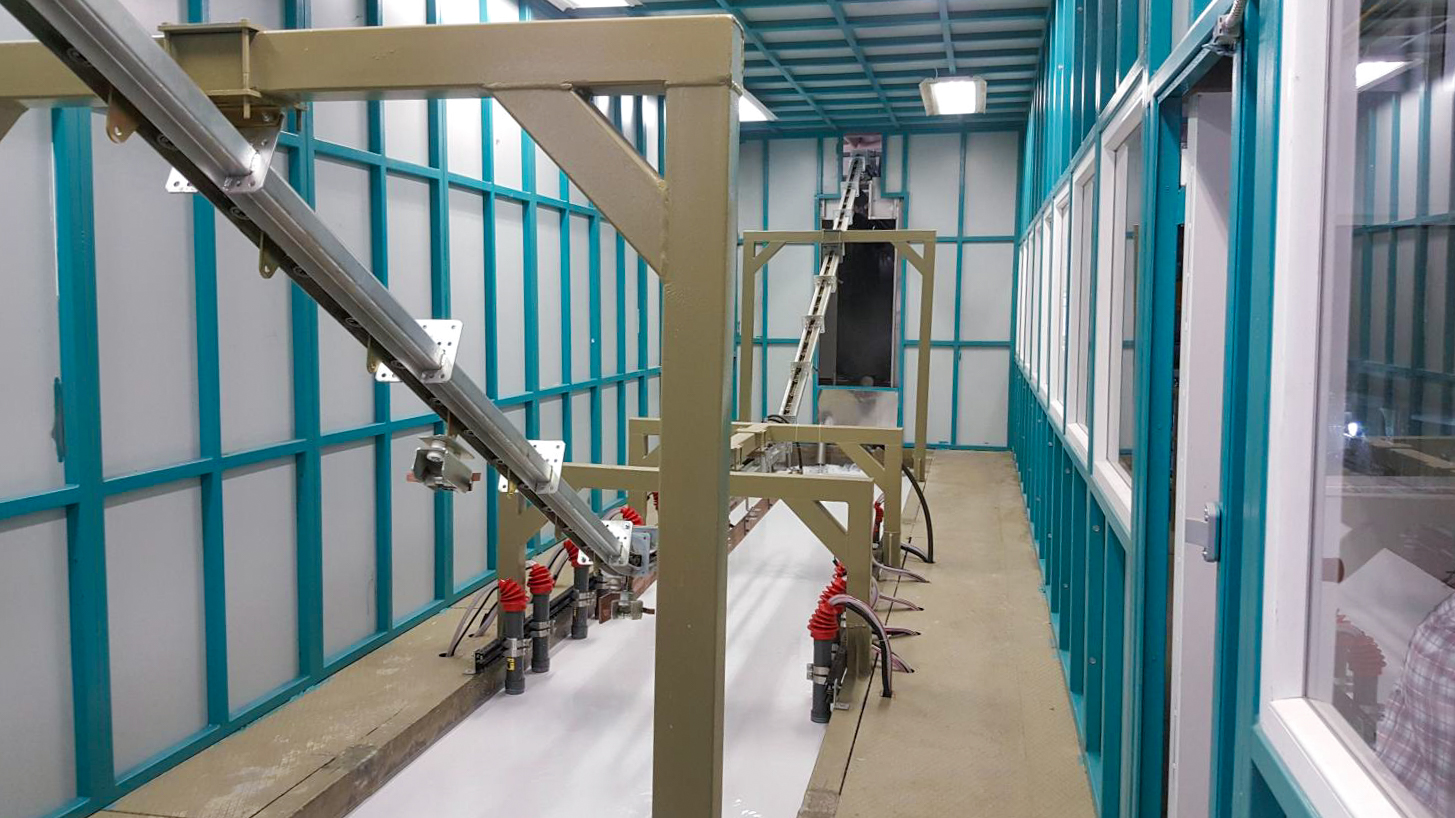Surface Treatment Washing

In industrial painting and coating applications, the pre-treatment of metal surfaces is extremely critical. A surface that is not properly cleaned and activated can negatively affect coating adhesion, corrosion resistance, and the final product quality. Therefore, the pre-treatment stages of metal parts must be carried out with great precision. In the first step, surfaces are cleaned with specially formulated alkaline, neutral, or acidic cleaners. They are completely freed from rust, dirt, oil, and residues.
Next, a conversion coating is applied to the surface. Commonly used zinc or iron phosphate coatings provide superior corrosion protection and paint/coating adhesion. These multi-layered coatings integrate with the texture of the metal by penetrating it.
In recent years, zirconate-based conversion coatings have also started to be used as a more environmentally friendly alternative. These nano-ceramic coatings, which do not contain phosphorus or heavy metals, combine high performance with a lower environmental footprint. After the coating application, final processing steps such as neutralization, passivation, and drying are also important. This ensures that the coating is stabilized and long-lasting.
When the pre-treatment steps are correctly completed, metal surfaces are perfectly ready for painting or coating applications. This significantly enhances both the performance and appearance of the final products, which is vital for many critical industries such as automotive, aerospace, and machinery.

Plastic materials are widely used in many industries today. However, their smooth and inert surfaces can make subsequent processes such as painting, printing, or bonding more challenging. Therefore, applying an appropriate surface pre-treatment is crucial. Here are the main methods used in preparing plastic parts:
High-Pressure Cleaning
In these systems, plastic parts are cleaned under high pressure with hot alkaline solutions sprayed from injector nozzles. The parts are then passed through rinsing zones to remove surface residues and finally dried in water dryers. This effectively removes oil, dirt, and other contaminants from the surfaces.
Flame Treatment
In this method, plastic surfaces are briefly treated with a controlled flame or plasma fire. This process creates microscopic grooves and roughness on the surface, increasing the surface area and enhancing the material’s surface energy and adhesion.
Carbon Dioxide (CO2) Cleaning
Plastic parts are cleaned by spraying them with high-pressure carbon dioxide (CO2) vapor. Since critical CO2 is involved, the process is dry and environmentally friendly. Its strong solvent effect effectively removes oil and grease residues.
Plasma Treatment
Conducted in a low-pressure vacuum chamber, the plasma process applies a high-energy ion beam to the surfaces. This provides precise roughening and increased reactivity on the material surface, significantly improving adhesion in bonding, printing, and coating processes.
Fluorination
Fluorine-based gases chemically modify plastic materials. These gases react with the material surface, creating functional groups that enhance adhesion. This results in improved bonding strength and surface properties.
Selecting the most appropriate surface preparation method from these options is essential for the successful coating, painting, or bonding of plastic parts. These technologies can be optimized according to process conditions, part geometry, and material type, significantly enhancing the quality of the final product.

Cathodic electrocoating, or electrophoretic painting, is an advanced and highly efficient industrial coating method. This technology is especially widely used in the automotive industry. So, how does cathodic electrocoating work?
The process begins with immersing metal parts in a special water-based paint bath. When an electric current is applied to the bath, the resin and pigments in the paint are deposited onto the surface of the parts. This ensures that all surfaces, even those with complex shapes, are coated with an even and consistent thickness. The parts are then rinsed and cured in ovens, resulting in a hard, durable coating that provides superior corrosion protection. The advantages it offers include:
Cathodic electrocoating is a far more advanced coating technology compared to spray and powder coating. It is preferred in many industries, from automobile bodies to tractor parts, bicycles to furniture accessories.
With high efficiency, excellent appearance, and most importantly, long-lasting corrosion protection, cathodic electrocoating offers an optimized solution for advanced industrial applications. Moreover, all these advantages are provided through an environmentally friendly process.
© Durstsafa Endüstriyel Boyama ve Kurutma Sistemleri Ltd. Şti.